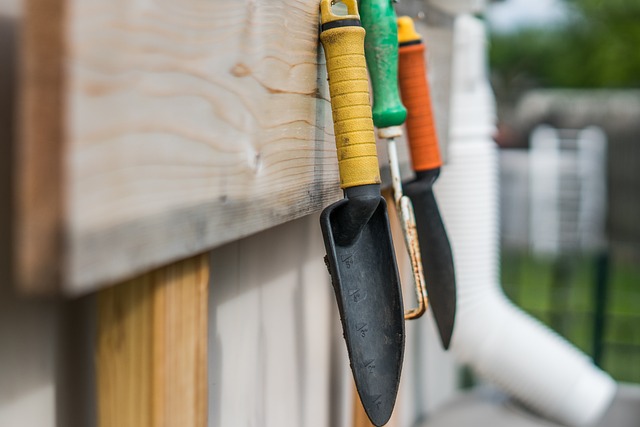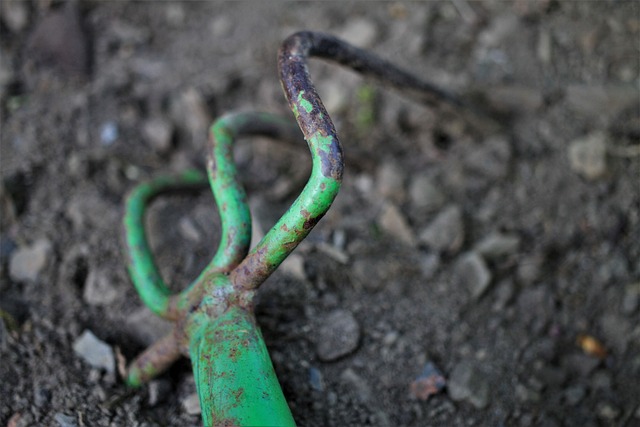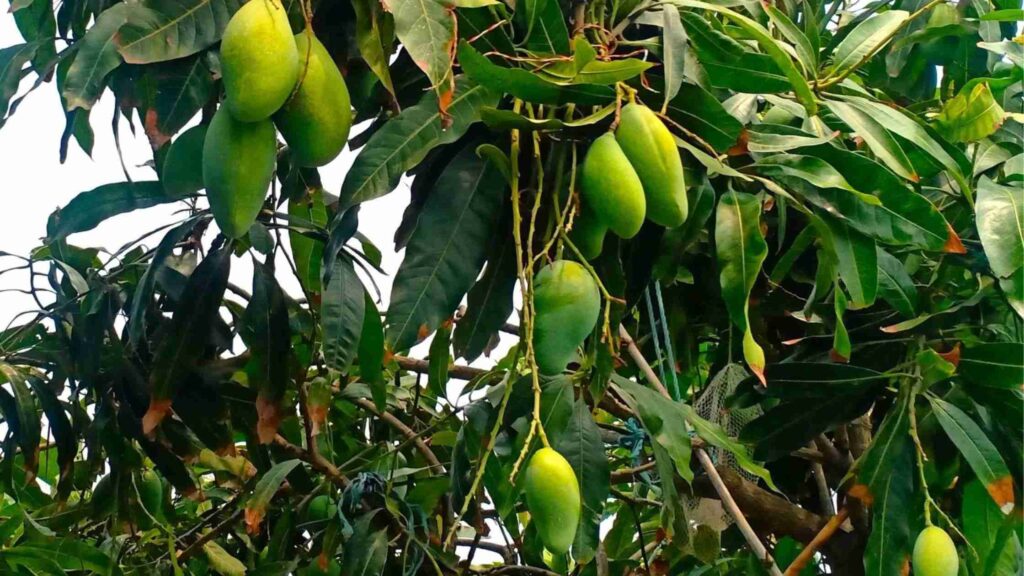Garden tools and types of equipment for New Roof Gardener. I have discussed with you the uses and functions of all the gardening tools that can make your Gardening life simpler:
1. Hand Trowel

The first and foremost important thing is to have a high-quality hand trowel. Purchase a sturdy trowel that will not break from the handle even when used on hard soil. If you’re only buying one tool, I highly recommend a hand trowel. It will be indispensable for your roof gardening project.
Why a Hand Trowel is Essential:
Versatility: A hand trowel is perfect not only for transplanting bedding plants, planting herbs, but also removing weeds. Meanwhile choose a broad blade for moving more soil and a narrow blade for digging up weeds, especially in rocky soil.
Comfort: Ensure the handle fits comfortably in your hand to make gardening tasks easier and more efficient.
Utility: A hand trowel is useful for transferring soil or manure, digging small holes for planting, and adding fertilizers to pots. It’s also handy for regular irrigation and general soil work.
2. Spraying Water Can

Spraying water can tool is incredibly versatile and beneficial for your roof garden for Seed Germination, Daily Watering, Foliar Feeding, Pesticide Application, Cooling Plants, and Cleaning Plants.
Benefits for Roof Gardening:
Especially spraying water cans are easy to handle and control, making them perfect for small or delicate plants. It provides an efficient way to water plants without wasting water. Easy to carry around, especially important for a roof garden where access to water sources might be limited.
3. Rake Gardening Tools

Hand rakes are essential tools for roof gardening due to their versatility and effectiveness in maintaining a healthy garden. After that hand rake gardening tools are useful for gathering leaves and garden waste, improving garden aesthetics and regular cleanup. Using hand rakes to keep the garden tidy and visually, loosening topsoil, spreading mulch and compost, distributing seeds, removing lawn thatch, breaking up soil and leveling beds.
Two types of Rakes can be used for roof gardening.
Straight-Headed Rakes: Ideal for breaking up soil and leveling beds. They have sturdy, closely spaced prongs for effective soil work.
Leaf Rakes: Feature longer, lighter prongs, perfect for gathering leaves and garden debris without damaging plants. Suitable for gentle tasks like spreading mulch and compost.
Incorporating hand rakes into your roof gardening toolkit is a smart move for efficient garden maintenance and improved plant health. Their ability to handle multiple tasks—from cleanup to soil aeration—makes them indispensable. By using a hand rake, you ensure that your garden remains not only attractive but also a thriving environment for your plants.
4. Weeder

Weeder is an essential tool for efficiently removing weeds from the garden. Besides it makes the task easier, reduce the risk of injury, and ensure that weeds are removed effectively. It ensures that firming our grip prevents slips, giving control over the tool that is useful for removing weeds. Especially It makes sure to remove the entire root to prevent regrowth of the weed.
Benefits of Using Weeders:
All in all gardening weeders are specifically designed to remove weeds quickly and effectively. After all they target the roots, ensuring complete removal and reducing the chances of regrowth. Using a weeder reduces the need to bend over or kneel for extended periods. This minimizes back strain and discomfort, making gardening more enjoyable. Weeders allow for the precise removal of weeds without disturbing surrounding plants. Meanwhile weeders are particularly effective for removing deep-rooted weeds like dandelions.
Tips for Effective Weeding:
The soil is softer after rain, making it easier to remove weeds completely. If it hasn’t rained, water your garden before weeding. Regular weeding prevents weeds from establishing and spreading. It’s easier to remove young weeds than mature ones with deep roots.
Weeding in the morning is another key point when it’s cooler can be more comfortable and less tiring. It also gives the garden time to recover throughout the day. Don’t leave pulled weeds on the soil surface, as they might re-root. Dispose of them in a compost bin or garden waste bag.
A comfortable and effective way to keep a garden clear of weeds is with weed eaters. You may keep your garden flourishing and healthy without expending extra work by adopting the right position, holding onto the plant firmly, and adhering to recommended weeding techniques. Weeding becomes much more manageable when you have a high-quality weeder in your gardening toolkit. It can save you time and physical pain.
5. Pruning Shears: Essential Tools for Roof Garden Maintenance

Pruning shears, commonly known as secateurs, are essential tools for keeping a healthy and growing roof garden. They are designed for precise and clean cutting of small branches and twigs, making them an essential tool for gardeners.
Why Invest in Pruning Shears?
High-quality pruning shears are designed to be comfortable to operate, decreasing hand fatigue after extended use. They frequently include ergonomic handles that provide a firm hold, increasing control and lowering the chance of unintentional cuts.
Good pruning shears are built of robust materials such as stainless steel or high-carbon steel, assuring long-term performance. Investing in a durable pair means you won’t have to replace them as frequently, which saves you money in the long term.
Maintenance:
To stop the transmission of illness, clean the blades on a regular basis. To keep the blades cutting as effectively as possible, occasionally sharpen them. For ensuring smooth operation, oil the pivot point.
Purchasing top-notch pruning shears is necessary to keep your roof garden looking nice and feeling healthy. They offer the durability, accuracy, and efficiency required for routine plant maintenance.
6. Hand Fork: Essential for Soil Preparation

A hand fork is a small but crucial tool for any gardener. It is designed to break up hard, lumpy soil and mix in compost, creating a consistency that promotes healthy root growth. Here’s why a hand fork is indispensable:
Soil Aeration:
The hand fork helps to loosen compacted soil, improving aeration and allowing roots to access oxygen more easily. Better aeration also enhances water drainage, preventing root rot and other water-related issues.
Compost Integration:
Mixing compost into the soil is essential for adding nutrients and improving soil structure. A hand fork ensures that compost is evenly distributed, providing consistent nourishment to plants.
Weed Removal:
Hand forks are excellent for uprooting weeds without disturbing the surrounding plants. They can reach into tight spaces, making them ideal for use in small containers and pots typical of roof gardens.
Using a Hand Fork:
Insert the prongs into the soil and twist to break up clumps. Work systematically across the soil surface to ensure even loosening. Spread compost over the soil surface. Use the hand fork to mix it into the top layer of soil, ensuring thorough integration. Arrange the prongs around the weed’s base. Gently lever the weed out, taking care to remove the entire root system.
Turning Compost and Mulch:
Useful for turning compost piles to speed up decomposition. It can be used to mix mulch into the soil, enhancing moisture retention and soil fertility.
Soil Loosening:
Insert the prongs into the soil and push down with your foot on the fork’s step. Rock the fork back and forth to break up the soil and create space for air and water to penetrate.
Compost Turning:
Use the fork to lift and turn compost, ensuring that all parts of the pile decompose evenly. This process helps to aerate the compost, accelerating the breakdown of organic matter.
Mulch Mixing:
Spread mulch over the soil surface. Use the digging fork to mix it into the top layer of soil, improving soil structure and moisture retention.
The hand fork excels in small-scale soil preparation, compost mixing, and weed removal, making it perfect for container gardening. By incorporating these versatile tools into your gardening routine, you can ensure that your plants have the optimal soil environment to thrive.
7. Hoe: A Versatile Classic Garden Tool

A hoe is an essential tool in any gardener’s arsenal, particularly useful for a variety of tasks including moving and shaping soil, weeding, and digging shallow trenches for planting. Among the different types of hoes available, the draw hoe is the most common and widely used.
Draw Hoe: The Common Workhorse
A draw hoe features a flat blade attached perpendicularly to the end of a typically wooden handle. This design makes it incredibly versatile and effective for several gardening tasks. Here’s a closer look at the uses and benefits of a draw hoe:
The sharp blade of a draw hoe is excellent for cutting through weeds at the soil surface. It can easily sever weed roots just below the soil, helping to prevent regrowth. Especially A draw hoe is perfect for moving and shaping soil, such as creating hills or mounds for planting crops like potatoes. It helps in leveling the soil and creating a smooth surface for planting.
Use a back-and-forth motion to create mounds or level areas. Position the hoe blade where you want to start the trench. Pull the hoe toward you, drawing soil out of the way to create a narrow trench. Repeat this process along the length of the desired trench.
A hoe, particularly a draw hoe, is a classic and versatile garden tool essential for any roof garden. Its design makes it suitable for a variety of tasks, including weeding, soil shaping, and trench digging. Whether you are a beginner or an experienced gardener, having a good quality hoe in your tool collection will undoubtedly make your gardening tasks easier and more effective.
8. Gloves Gardening Tools

Before you start ripping out weeds or pruning roses, it’s crucial to have a good pair of gardening gloves to protect your hands. Here’s why gloves are at the top of the list for essential gardening tools:
Protection from Plants and Tools:
Many plants have sharp thorns that can pierce and irritate your skin, such as roses and brambles. By acting as a barrier against these sharp objects, gloves help to avoid injuries. Certain plants that appear innocuous can irritate the skin or trigger allergic responses. By shielding your skin from these plants’ direct contact, gloves lower the possibility of skin irritation. Prolonged use of hand tools can cause blisters, calluses, and general wear on your hands. Gloves reduce friction and pressure, making tool use more comfortable.
Features of Good Quality Gardening Gloves:
The finest protection comes from materials that are meant to last, like leather or thick cloth. For added durability, several gloves have reinforced palms and fingertips. For comfort and dexterity, gloves should fit comfortably but snugly without being overly restrictive. Getting the right fit for gloves can be difficult and may not offer enough protection. Think about gloves that are appropriate for various weather circumstances. Warmer weather is preferable for lighter, more breathable gloves, while colder climates are better for insulated gloves.
Purpose of Garden Gloves:
Suitable for a variety of gardening tasks. Made from durable yet flexible materials for comfort and protection. Designed for tasks involving thorny or rough plants. Often made of leather or have reinforced areas for extra protection. Ideal for working in wet conditions or handling damp soil. Made from water-resistant materials to keep hands dry. Insulated gloves for gardening in cold weather. Keep hands warm while providing protection.
Using Gardening Gloves:
Gloves offer protection from prickly weeds and soil-borne diseases. To prevent hand injuries, make sure you have a tight grasp on weeds. Cuts and scratches from jagged thorns are avoided using gloves. shields hands against abrasions and blisters brought on by extended tool use. reduces the possibility of slippage and increases grip.
Investing in a good quality pair of multipurpose gardening gloves is essential for any gardener. They provide crucial protection against thorns, irritating plants, and the wear and tear caused by using hand tools. With the right pair of gloves, you can make your gardening experience safer and more enjoyable, allowing you to focus on cultivating a beautiful and healthy garden.
9. Utility Belt

Imagine being out in the garden and realizing that one of your tools is missing. This can interrupt your workflow and waste valuable time. A utility belt is a worthwhile investment for any gardener, as it provides order, accessibility, and efficiency.
Advantages of a Utility Belt:
A utility belt provides designated pockets and loops for each tool, keeping everything organized. You can easily see what tools you have and ensure nothing is left behind. Tools are less likely to be misplaced or forgotten in the garden. Helps maintain the longevity of tools by keeping them secure and in good condition.
Keeps your hands free to work, making the gardening process more efficient. Reduces the risk of dropping and damaging tools. It reduces the time spent looking for tools, allowing you to focus on gardening. It helps your complete tasks more quickly and efficiently. Streamlines your gardening process by having all necessary tools readily available. It enhances productivity by minimizing interruptions.
Features of a Good Utility Belt:
Durability: Constructed from sturdy materials like leather or thick cloth. can tolerate the abrasions caused by gardening activities.
Numerous Pockets: Different tools fit into different kinds and sizes of pockets. specific sections for things like seed packs, trowels, and pruners.
Comfort: Adjustable straps to fit comfortably around your waist. Padded belts to reduce strain and provide extra support.
Secure Fastenings: Strong buckles or Velcro to keep the belt securely in place. Ensures that tools stay in the pockets even when you move around.
Water-Resistant: Resistant to water and dirt, protecting your tools from the elements. Easy to clean and maintain.
A utility belt is a valuable addition to any gardener’s toolkit. It ensures that all your tools are organized and easily accessible, enhancing your overall gardening experience. By investing in a utility belt, you can improve your efficiency, save time, and focus on what you love most—gardening.



